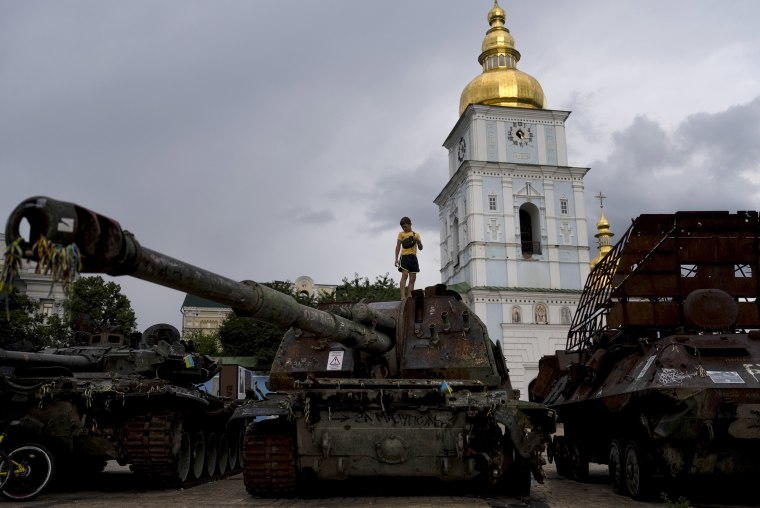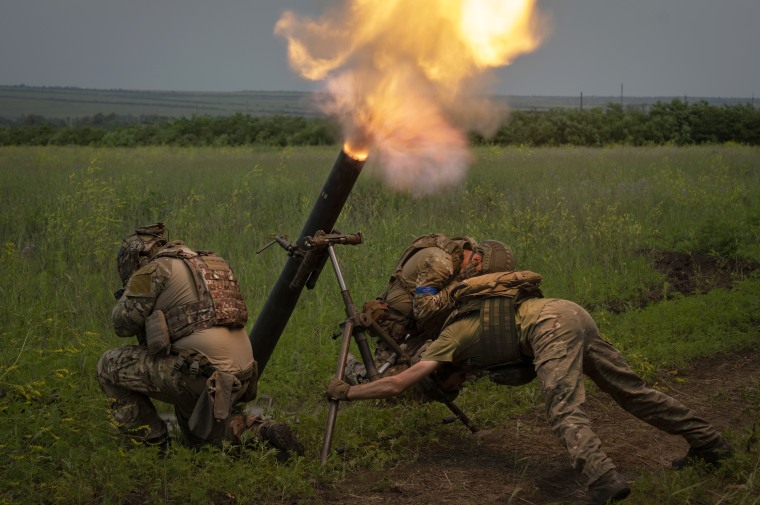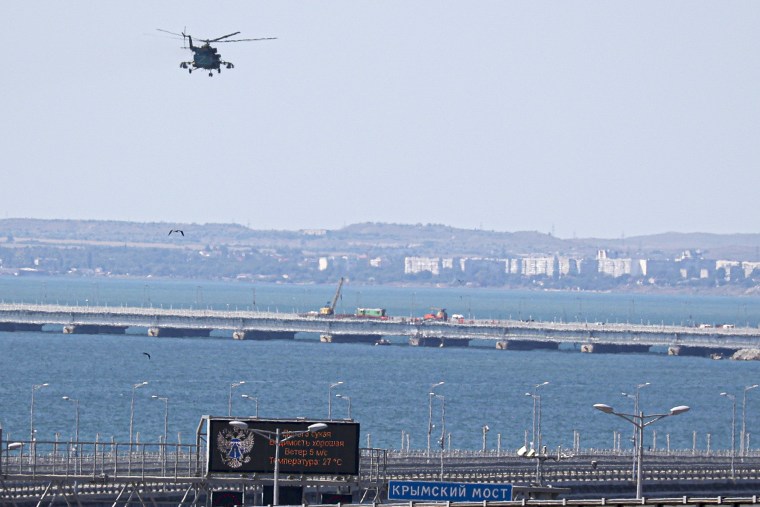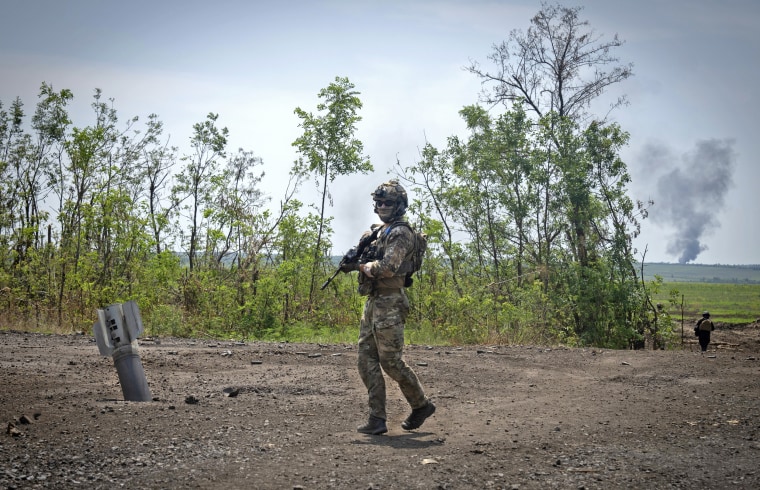As Ukrainian troops wage a difficult fight against well-defended Russian forces in Ukraine, the government in Kyiv is waging a different kind of battle abroad, trying to shape how the world perceives its counteroffensive.
Ukrainian officials and their supporters say they are confident they will prevail on the battlefield in the end, but warn against what they see as unrealistic expectations in media coverage and commentaries that could create a misleading narrative suggesting it cannot and will not win.
“The two things that we keep asking our allies for are weapons and patience,” said Yuriy Sak, an adviser to Ukraine’s defense minister.
Although equipped with new U.S. and other Western-made weapons and gear, including tanks, longer-range missiles and artillery ammunition, Ukraine lacks air power and has encountered stiff resistance from the Russian forces who have planted hundreds of mines across the front line, set up anti-tank barriers and dug rows of defensive trenches.
Since the counteroffensive was launched in June, Ukraine has retaken about 241 square kilometers of territory in the country’s south and east, or less than 100 square miles, according to Hanna Maliar, the country’s deputy minister of defense.
Sak and other officials in Kyiv said that the Ukrainian military has prioritized preserving its troops and weapons as it searches for a weak point in Russia’s defenses. In the meantime, Ukraine has begun to surge troops in the country’s south and pursued small-scale attacks to test the Russian lines.

Some U.S. officials privately expressed disappointment that the Ukrainians have appeared to hold back on deploying some of their most well-equipped and trained units, and that they have not necessarily applied the training principles they received. “There is a frustration that they have not used more of the combat power that they have,” one U.S. official said.
Another senior administration official said the Biden administration and U.S. allies have given Ukraine everything it requested for the counteroffensive, including 500 tanks and hundreds of armored vehicles.
“We are confident that they have significant combat capability available to them, and that they’re going to employ that at a time and place of their choosing to defend their country and take back sovereign territory,” Pentagon press secretary Brig. Gen. Pat Ryder told reporters Thursday.
Ukrainian officials reject the idea they are moving too slowly.
“I don’t think there’s any other nation or people in the world who would want this counteroffensive to be moving faster,” Sak said of Ukraine.
“Look, we are facing an enemy that outnumbers us in terms of personnel, artillery and everything else. We have to be David in this battle against Goliath, which means we have to be smart,” he said.
Heavy casualties
Leonid Polyakov, a former Ukrainian vice defense minister, said that in two separate cases, once in June and another time in July, a brigade commander had pursued direct assaults during the counteroffensive in hopes of a swift victory. The army sent infantry and armored units to attack the Russian lines across uncleared minefields and without suppressing enemy fire. The brigades were shredded by opposing forces, and the commanders were severely criticized internally for the unnecessary losses.

Ukrainian President Volodymyr Zelenskyy has acknowledged that the much-discussed “spring counteroffensive” was delayed as his forces worked to incorporate new Western military equipment and training. Speaking virtually at the Aspen Security Forum in Colorado, he said they waited “because, frankly, we had not enough munitions and armaments and not enough properly trained brigades.”
The Russians were able to use the additional time to build out their defenses, analysts and U.S. officials said.
Now, breaking through Russian lines across the dense minefields in the east and the south will almost certainly inflict high casualties on Ukrainian troops, U.S. officials and experts said.
“That’s a tough decision for a battlefield commander to make,” the senior administration official said. “And I don’t think that’s anything anyone can begrudge the Ukrainians for taking seriously,” the official said.
George Barros, a Russia analyst at the Institute for the Study of War think tank, said he was concerned that policymakers and the media could set excessively high expectations for the Ukrainians. There is a danger that “there might be the narrative of stalemate or the narrative of a failed Ukrainian counteroffensive,” he said.
Ukraine and its supporters in the West say those unrealistic expectations could play into Russia’s hands, as Moscow is betting that NATO allies over time will tire of providing military aid to Kyiv and eventually lean on Ukraine to agree to concessions that could halt the fighting.
Russian President Vladimir Putin claimed that Ukraine’s counteroffensive had failed last week, saying that “not in a single area of fighting the enemy has had success. All attempts of the counteroffensive have been stopped, the enemy has been pushed back, with large losses.” His account has been echoed in Russian media, pro-Kremlin Telegram channels and press statements from Moscow.
Countries in central and Eastern Europe, which have often lobbied for Ukraine’s case inside NATO and in Washington, are mindful of potential war fatigue taking root in the West. In the run-up to Ukraine’s counteroffensive, Polish leaders tried to temper expectations, warning it would require “a massive effort” and not deliver any immediate result, said Nikodem Rachoń, spokesperson for the Polish embassy in Washington.
“It’s quite evident that Russia exploits this aspect in its propaganda, aiming to weaken the unity of countries supporting Ukraine,” he said.
William Taylor, a former U.S. ambassador to Ukraine, said there’s a risk that overly gloomy conclusions about Ukraine’s prospects could become a “self-fulfilling prophecy.”
“If the perception gets out there that the Ukrainians can’t win, then we’re not going to provide them the stuff they need to win,” he said.
Fighting without air power
The Ukrainians say air power is one of the crucial areas where they need international help. Without an adequate air force that can clear a path for ground forces, they are trying to seize back territory with only artillery and armored units — an approach no Western army would contemplate, former officials and military analysts said.
“We wouldn’t do it. We’ve never done it and yet we’re asking them to do it,” said Taylor, who served as an Army infantry officer in Vietnam.

U.S. military doctrine places a heavy emphasis on coordinated air and ground attack, or “joint fire support.” Such an approach increases the “chances of successful maneuver,” according to a 2019 report from the military services to the Joint Chiefs of Staff.
Without air support, Polyakov said, the Ukrainian armed forces must improvise and operate with greater caution. That means they cannot follow the fundamentals of U.S. military doctrine, he said.
“We have launched a counteroffensive without any kind of air superiority — not in the air force, not in drones, not in helicopters. We have a little bit in terms of precision-guided artillery munitions,” said Polyakov, who works for a military think tank advising Zelenskyy. “But to talk about holding back without all these necessary components, it is ludicrous.”
The Biden administration says it plans to provide F-16 fighter jets to Ukraine and European governments are organizing training for Ukrainian pilots, but it likely will take months before the jets are in action. U.S. officials say the fighters will not be enough alone to turn the tide.
A diplomatic solution
For Ukraine, which is dependent on outside military aid to sustain its war effort, the political stakes of the counteroffensive could not be higher.
Ukraine says it is making steady progress, and that its forces have taken back territory in a period of weeks that the Russians seized over months.
Zelenskyy recently praised Ukrainian troops for taking back control of the southeastern village of Staromaiorske after an intense battle marked by artillery duels and house-to-house fighting. An assault with armored units in June failed to break through Russian lines in the south and, in the past week, Ukraine has made a concentrated effort in the western area of the Zaporizhia oblast, according to analysts and U.S. officials.
But there has been no significant change in the front lines in the war for the past nine months. Both Ukrainian and Russian forces have failed to achieve major advances, and Samuel Charap, a senior political scientist at the Rand Corp think tank, argues that neither side has a realistic chance of scoring a definitive victory.
As a result, the U.S. should start preparing for an inconclusive outcome and explore options for an eventual diplomatic settlement, he said.
“It’s an indication of where things are going. There’s not going to be a decisive military outcome,” Charap said.

